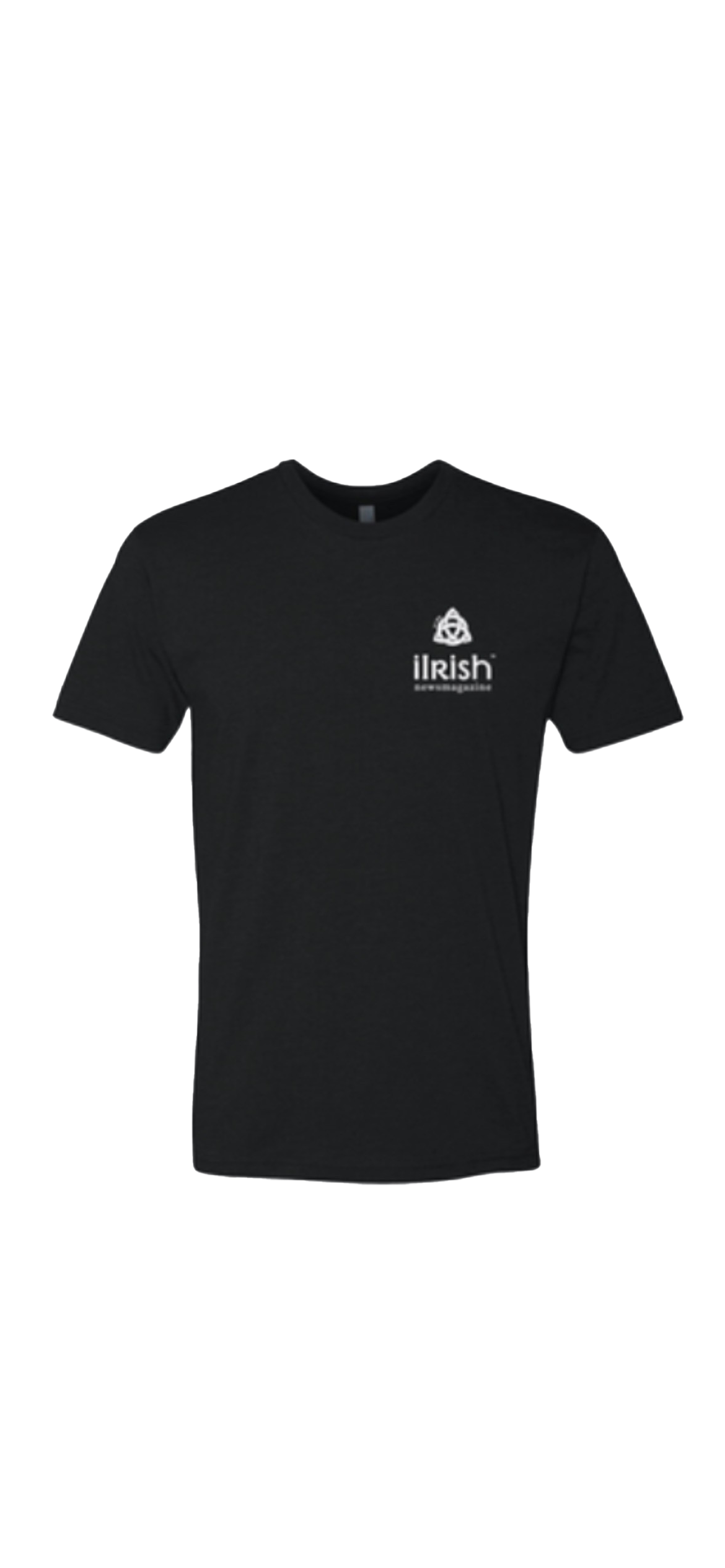
At Home Abroad: Slavery and the Irish
By Regina Costello
“In the slavery business, no tribe was fiercer or more feared than the Irish.” Thomas Cahill.
Efforts to obliterate or deny facts do not change unpleasant realities. The Irish have contributed to the horrors that live in American history of yesterday and today. We are part of the problem.
Rachel Birmingham, an Australian presenter and speaker, shows us the path: “The only way we can change our world is to take responsibility for our part in it.” It is common for us to look at Irish history and view our existence as that of misery and persecution. In so many ways our history is steeped in wretchedness that resonates in traditional Irish music, poetry and stories from the seanchaí.* But what seldom comes to light is the suffering and oppression we have inflicted upon others.
The story of St. Patrick is shrouded in myths and legends, making it difficult to elucidate the facts. However, a number of well-respected historians support the version that we enslaved our patron saint of Ireland. Additionally, this event is chronicled in St. Patrick’s autobiography The Confessio.
Documentation attests that he was abducted in the 5th century from his home on the west coast of Great Britain. Irish marauders attacked his village of Bannavem Taburniae and placed him among others on their slave ship back to Ireland. The attack was ordered by Niall, the pagan King of Ireland.
Philip Freeman, Princeton graduate, Professor of Classics at Luther College Iowa and published author, tells us much about this story. He details how the Irish carried out many such raids on the west coast of Britain for at least a hundred years before the time of St. Patrick.
Thomas Cahill, best-selling author and renowned historian, tells us that the Irish were the most feared in the slave trade. It is remarkable that St. Patrick returned to the land of his captors as a missionary after a period of religious training.
St. Patrick’s Death
There he converted and baptized thousands of Druid priests, chieftains and aristocrats until his death on 17 March in 461 A.D. His only other remaining document, his Letter to The Soldiers of Coroticus, condemning slavery, and is believed to be earliest document denouncing the practice.
Sprinting centuries forward, the Irish emigrated all over the world, and history tells us that some of those that stayed home, as well as a number of emigrants, participated and financially benefitted from the slave industry. In 1834, there were approximately 16,000 absentee slave owners in Ireland, spread out over thirteen colonies.
Evidence suggests that the post-Famine Irish in America were on board with capitalizing on the lucrative slave trade. In 1850, the Irish were masters of 99,128 slaves in America; by 1860 that number grew to 115,894. This explains why so many African Americans have Irish roots or last names.
I stumbled upon one African American story while developing this column and reveled in its diversity and historical significance. Michael W. Twitty is a gay, African American, Jewish, culinary author and educator. He and his family believed themselves to be in part, descendants of Irish American slaveholders. Genealogical research and DNA testing reveals strong Irish ancestry on both sides of his family.
On the maternal side, substantial data was retrieved indicating that his biracial grandparents, Terrell Mungo and Margaret Pate, were the children of South Carolina slave owners. On his father’s side, evidence surfaced that his light skinned, brown/redhaired grandmother Hazel is a descendant of Hettie. Hettie’s father was Richard Bellamy, the son of the slaveholders of that family.
His father’s side also gave light to Twitty’s great-great-great grandfather, Spencer “Plenty” Hughes. Family legend describes him as a big Irishman who loved to drink and tell jokes. Twitty writes about his first visit to Ireland; he felt he had returned home, noting how he loved the food, the people and found the country “heartbreakingly beautiful.” He exquisitely notes, “I wonder if people will take time to reflect on the complexity of the Irish-American heritage, which is more than green rivers, green beer and cheap hats…. It is a story of a long and tortured search for American identity, redemption, and fulfillment of a dream to find a home free of oppression. In that, the stories of Irish-Americans and Black-Americans aren’t that different.”
Black Genealogy
Black genealogy, rooted in white ancestors, some of whom took advantage of their young slave women, are an all-too-common phenomenon in the African American narrative. The multitude of hurtful stories and dire historical family facts have skulked from the shadow to the light by means of technological advances making it impossible to ignore the data. We are not who we think we are.
My maternal and paternal Irish ancestry goes back for generations to Mayo and Roscommon. The bulk of family members remained in Ireland, but no doubt many immigrated to America. But I assumed that I was as Irish as Irish can be, based on family stories and history.
Embarking on my own ancestral research, I was hopeful that my DNA results would mirror those of Conan O’Brien – 100% Irish. My genetics reveal that I am 100% Irish AND British.
So, in truth, all our ancestry is intertwined. There are no purebreds, we are all mutts sharing the common thread of the human race.
Reality is distorted by perception and preconceived notions. If both line up in a linear fashion with reality, much could be accomplished in the socially broken country that is my home abroad. The Hill we Climb that Amanda Gorman speaks of, is not a choice but a necessity.
The wise words from such a phenomenal young poet are astounding; “being American is more than a pride we inherit. It’s the past we stepped into and how we repair it.” A premise to look at the past and accepting responsibility for despicable actions can crank open the window fully to ensure that no one needs to say “I can’t breathe” ever again.
Cahill describes us as fierce. Let’s channel that trait to ensure that window never snaps shut again. In the words of Mahatma Gandhi, “The future depends on what you do today.” The repair can be set in motion today through mindful thought and behavior in the hope that our children follow suit and will do a better job of the future than we did of the past.
Sources consulted:
www.rachaelbermingham.com
“Making People Feel Bad Can Be a Strategy for Helping Them”. Association for Psychological Science. May 2017.
“St. Patrick: From a Trafficked Slave to an Emblem of the Country.”
“Kiss Me, My Slave Owners were Irish”. Liam Hogan. March 16, 2015.
“The Irish and the Atlantic Slave Trade”. Published in 18th-19th Century Social Perspectives, 18th–19th – Century History, Early Modern History (1500–1700), Early Modern History Social Perspectives, Features, Issue 3 (May/Jun 2007), Volume 15.
St. Patrick of Ireland: A Biography. Philip Freeman.
How the Irish Saved Civilization. Thomas Cahill.
“Kiss me, I’m Irish took on a new meaning when DNA proved that I was”. Michael W. Twitty. www.irishcentral.com
“How Amanda Gorman’s Poetry Roused a ‘Country that is Bruised but Whole”. Danilo Machado. January 21, 2021. www.quotespedia.org
* Seanchaí is the Irish term for storytellers.
*Regina is a Graduate from the National University of Ireland, Galway and a Postgraduate from the National University of Ireland, Dublin. Career includes Curator of the Irish American Archives at the Cleveland History Center; Executive Director of the Soldiers’ and Sailors’ Monument Commission and Executive Coordinator of the Northern Ohio Rose Centre. She serves on the Board of Directors of the Mayo Society of Greater Cleveland. Contact: [email protected]





